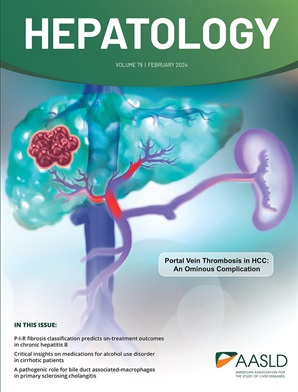Enhanced hepatitis B virus-specific immunity by combined neutralizing antibody therapy and DNA vaccination in a murine model of chronic hepatitis B infection
IF 12.9
1区 医学
Q1 GASTROENTEROLOGY & HEPATOLOGY
引用次数: 0
Abstract
Background & Aims: Successful treatment of chronic HBV infection remains a great challenge due to the difficulty in inducing efficient immune responses. Here, we investigated the therapeutic potential of DNA vaccination combined with a potent HBV broadly neutralizing antibody (bNAb) targeting the small surface viral antigen. Approach & Results: C57BL/6 mice were transduced with adeno-associated virus (AAV)-HBV and were treated twice a week with HBV bNAb for 5 weeks. A DNA-based vaccine encoding the HBV core, envelope, and polymerase proteins was administered once to mice 3 weeks after initiating of antibody therapy. The antiviral effects and antigen-specific immune responses were evaluated before and for 8 weeks after therapeutic vaccination. Vaccine administration with or without antibody treatment induced the development of functional HBV-specific CD8+ T cells and envelope-specific resident memory T cells in the liver. The combination of antibody treatment and DNA vaccination enhanced the recruitment of B and CD8+ T lymphocytes into the liver of HBV-carrier mice two weeks after vaccination. However, although still detectable 2 months after vaccination, HBV-specific CD8+ T cells showed an exhausted phenotype, suggesting that they are dysfunctional. In contrast, a more effective control of antigenemia was observed following combination therapy, which was associated with the presence of HBs-specific memory B cells. Conclusions: Although the combination therapy did not result in a functional cure, our findings indicate it produced additive effects on the development of HBV-specific T cells in the liver immediately following treatment, offering a better insight into the mechanisms underlying hepatic tolerance.求助全文
约1分钟内获得全文
求助全文
来源期刊

Hepatology
医学-胃肠肝病学
CiteScore
27.50
自引率
3.70%
发文量
609
审稿时长
1 months
期刊介绍:
HEPATOLOGY is recognized as the leading publication in the field of liver disease. It features original, peer-reviewed articles covering various aspects of liver structure, function, and disease. The journal's distinguished Editorial Board carefully selects the best articles each month, focusing on topics including immunology, chronic hepatitis, viral hepatitis, cirrhosis, genetic and metabolic liver diseases, liver cancer, and drug metabolism.
 求助内容:
求助内容: 应助结果提醒方式:
应助结果提醒方式:


